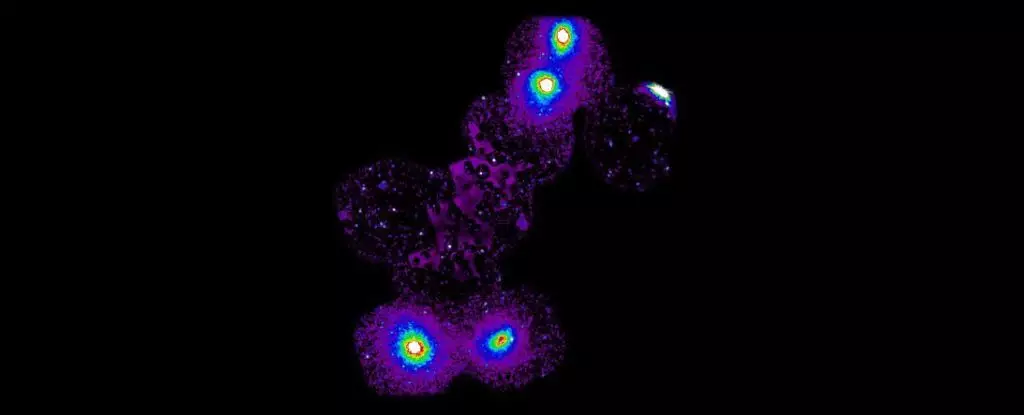The cosmos has long captivated the imagination of scientists and enthusiasts alike, yet one of its most profound mysteries continues to elude our understanding: the enigma of missing matter. While traditional matter, composed of familiar particles like protons, neutrons, and electrons, accounts for only about 15% of the universe, the remaining 85% is labeled as “dark matter.” This dark matter, along with intergalactic gas, has made the quest for understanding the universe’s fabric an ongoing saga of discovery. Recent findings have brought us one step closer to solving this cosmic puzzle, suggesting that a significant portion of this elusive material is lurking within the large-scale structure of the universe.
Unprecedented Observations
In a groundbreaking study, astrophysicists made a significant leap forward in our understanding of this dark matter. The discovery of a massive filament of hot gas stretching approximately 23 million light-years, nestled in the Shapley Supercluster, signals a potential turning point in cosmology. This filament, identified through X-ray observations, connects four sub-clusters of galaxies and provides crucial evidence for simulations that previously appeared to be nothing more than theoretical projections. Konstantinos Migkas from Leiden Observatory has articulated the excitement surrounding these findings, noting that this alignment with theoretical models is an unprecedented occurrence in the realm of cosmic research.
A Glimpse into the Cosmic Web
The grand architecture of the universe is often likened to a cosmic web, a vast network of filaments primarily composed of dark matter. These filaments serve as pathways that carry galaxies and other matter across intergalactic space. Although the visible universe is only a fraction of the actual matter present, it becomes clear that much is hidden in this interconnected structure. Researchers like Migkas and his team leveraged powerful X-ray telescopes to probe this cosmic tapestry more deeply. By harmonizing data from the retired Suzaku telescope and the state-of-the-art XMM-Newton telescope, they mapped the filament’s delicate glow and efficiently filtered out noise from other cosmic entities like black holes, unveiling a stellar structure expected in theoretical models.
Significance of Hot Gas Filaments
The newly discovered filament is not merely an interesting curiosity; it has profound implications for our comprehension of the universe’s composition. The filament harbors enough material to inhabit ten Milky Way galaxies, scintillating at an astonishing temperature of over 10 million degrees Celsius. What makes it particularly compelling is how closely it aligns with theoretical predictions, offering a tangible proof of concepts that scientists had speculated upon for years. With traditional matter unable to account for the gravitational effects we observe, the identification of these hot gas filaments presents a plausible explanation for the distribution of the universe’s mass.
The Implications on Cosmic Evolution
This discovery does not merely add a new chapter to the lore of cosmic studies; it challenges us to reevaluate our concepts of the universe’s evolution. The idea that unseen filaments might hold the key to understanding how galaxies form and cluster points to a more complex picture of galactic dynamics. As we grapple with these findings, the potential for future research expands exponentially. Astronomers and physicists can refine their models of cosmic behavior, perhaps leading to new insights about the forces that have shaped our universe over billions of years.
A Collaborative Triumph
The unveiling of this cosmic filament showcases the astounding capabilities of modern astronomy while highlighting the importance of collaboration across various observational technologies. The integration of differing observational techniques has created a new benchmark for detecting and studying the faint light from cosmic filaments. Norbert Schartel from the European Space Agency remarked on the significance of this united approach, emphasizing how it encourages a new methodology for future inquiries into the nature of dark matter and the large-scale structures that dominate the cosmos.
Our journey through the universe continues to be enriched by discoveries like the identification of this massive filament. As we peel back the layers of cosmic mystery, each step brings us closer to understanding our place within this vast and intricate tapestry. The universe, it appears, still has many secrets waiting to be unveiled.


Leave a Reply